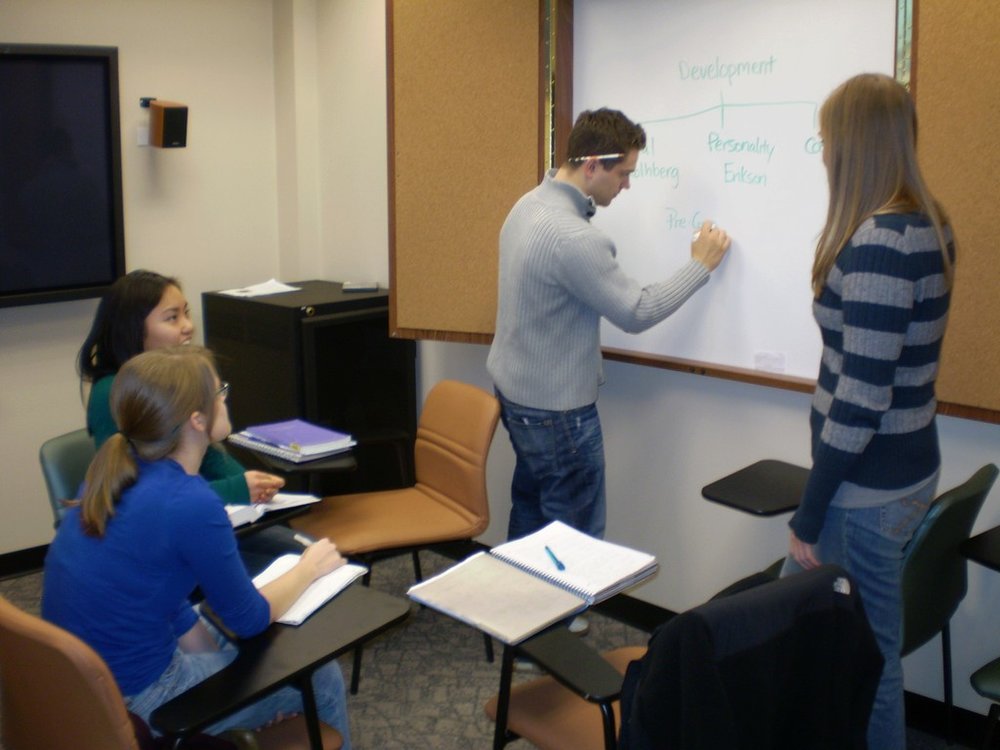
This blog focuses on my scholarship in my five research projects: learning assistance and equity programs, student peer study group programs, learning technologies, Universal Design for Learning, and history simulations. And occasional observations about life.
Expanded 2016 Revised Directory of Apple TV Apps used for classroom and personal life
Disclaimer: This document provides an overview of the Apple TV apps I have found useful as a college educator and in my personal life. After posting up this directory a few weeks ago, I have revised it with addition of more apps and reorganized it. In the future I will only revise the directory about every six months.
I enjoy Apple TV since I am able to watch on a large-screen with a great sound system the same content that used to be confined to my iPhone, laptop, or desktop computer. At the University of Minnesota where I am a history professor, Apple TV is integrated into a growing number of classrooms so that students can share video content through the projection television system. First-year students in the College of Education and Human Development receive an iPad upon arrival and use of it is integrated into many of their first-year courses. I use the history apps to help me connect today’s events with the history topics we are studying in class.
Check the App Store Often
This abridged directory contains apps that are often free and are of my interest and taste. With additional ones being added weekly, this directory does not try to be inclusive of all of them. A nice feature of these apps are that some will dlowload to your personal iPhone and iPad if you have set up the device to receive automatic downloads.
Expanded 2016 Directory of Apple iPad apps for classroom and personal life
This document provides an overview of the iPads apps I have found useful as an educator and in my personal life. Most of the apps were free, some cost a dollar or two. I have a separate section in the directory for the apps used in my college history course as well as current history events that are also integrated into class sessions.
Some of the Apple iPhone and Apple TV apps on those iOS devices will download to your iPad. This automatic downloading only occurs if the iOS devices have the automatic downloading enabled through the settings of the iOS device. I have noticed that some Apple TV apps will download to the iPad but not to the iPhone. This may have to do with whether they can display on the smaller iPhone screen than the larger iPad.
Features of the Apple iPad
There are four features of the Apple iPad I find compelling in comparison with other desktop or laptop computers:
- Due to its slim design and modest weight, mobility is a key feature. I carry around the home and use in different places. Rather than feeling burdened by its constant connection to the Internet through WI-FI, I use it frequently as a resource to enhance other parts of my life.
- For me, the touch screen with the iPad is an enjoyable way to interact with the device. This tactile interaction with the iPad is different from use of a traditional keyboard and a mouse.
- Ease and enjoyment of reading has been increased since I can use the touch screen easily with my fingers to enlarge the image or text to increase readability and focus attention. While the pinch and zoom feature is not available through all apps, nearly all of them allow easy increase or decrease of text size as well as changing the font and the background color of the publication.
- The apps. With the total approaching two million to select from, there is an app for nearly everything. While creating an app requires great skill, it has opened opportunities for many more software designers to share their applications for free or very modest cost. The app store through Apple provides a very democratic way for people to widely share their work with others.
Check the App Store Often
This abridged directory contains apps that are often free and are of my interest and taste. With additional ones being added weekly, this directory does not try to be inclusive of all of them. You can go to the official Apple App store and use the options on the top menu bar to search all apps by name, category, and whether paid or free I also downloaded some apps noted below that focus on identifying the newest and best apps. I have noticed that some apps are free for the first week or two they are introduced and then they become paid only. I think this is done to generate positive buzz and reviews in the App Store to encourage future consumers to purchase them. I have made it a game to check out the official App Store every few days.
Analysis of student performance in peer led undergraduate supplements
Gardner, L. M. (2015). Analysis of student performance in peer led undergraduate supplements. (Ph.D. Dissertation), University of Kansas, Lawrence, Kansas. Retrieved from https://kuscholarworks.ku.edu/bitstream/handle/1808/19159/Gardner_ku_0099D_14264_DATA_1.pdf?sequence=1&isAllowed=y
Foundations of Chemistry courses at the University of Kansas have traditionally accommodated nearly 1,000 individual students every year with a single course in a large lecture hall. To develop a more student-centered learning atmosphere, Peer Led Undergraduate Supplements (PLUS) were introduced to assist students, starting in the spring of 2010. PLUS was derived from the more well-known Peer-Led Team Learning with modifications to meet the specific needs of the university and the students. The yearlong investigation of PLUS Chemistry began in the fall of 2012 to allow for adequate development of materials and training of peer leaders. We examined the impact of academic achievement for students who attended PLUS sessions while controlling for high school GPA, math ACT scores, credit hours earned in high school, completion of calculus, gender, and those aspiring to bepharmacists (i.e., pre-pharmacy students). In a least linear squares multiple regression, PLUS participants performed on average one percent higher on exam scores for Chemistry 184 and four tenths of a percent on Chemistry 188 for each PLUS session attended. Pre-pharmacy students moderated the effect of PLUS attendance on chemistry achievement, ultimately negating any relative gain associated by attending PLUS sessions. Evidence of gender difference was demonstrated in the Chemistry 188 model, indicating females experience a greater benefit from PLUS sessions. Additionally, an item analysis studied the relationship between PLUS material to individual items on exams. The research discovered that students who attended PLUS session, answered the items correctly 10 to 20 percent more than their comparison group for PLUS interrelated items and no difference to 10 percent for non-PLUS related items. In summary, PLUS has a positive effect on exam performance in introductory chemistry courses at the University of Kansas. the implementation of the program in the university, particularly for the accounting faculty.
To download the complete annotated bibliography of more than 1,100 citations of postsecondary peer cooperative learning programs, click on the following link, http://z.umn.edu/peerbib
Assessing the impact of a muilti-disciplinary Peer Led-Team Learning program on undergraduate STEM education

There has been a national call to transition away from the traditional, passive, lecture-based model of STEM education towards one that facilitates learning through active engagement and problem solving. This mixedmethods research study examines the impact of a supplemental Peer-Led Team Learning (PLTL) program on knowledge and skill acquisition for students in introductory biology, chemistry, calculus and applied statistics courses. Results indicate program participants reliably outperform their matched pairs in courses that emphasize quantitative reasoning. Moreover, program participants report acquiring important insights about learning, collaboration, and engagement in undergraduate STEM education. These results are consistent with previous findings on PLTL and also provide insight into the roles of course context and student population on program outcomes.
To download the complete annotated bibliography of more than 1,100 citations of postsecondary peer cooperative learning programs, click on the following link, http://z.umn.edu/peerbib
2016 Apple TV App Directory

At the University of Minnesota where I am a history professor, Apple TV is integrated into a growing number of classrooms so that students can share video content through the projection television system. First-year students in the College of Education and Human Development receive an iPad upon arrival and use of it is integrated into many of their first-year courses.
The Apple TV has been an underappreciated technology that Apple has significantly improved through this third-generation unit. This annotated directory identifies the apps that I use on my Apple TV unit at home on a regular basis. There are many other apps that I do not profile simply because they require an additional charge for their use or are not of interest. Currently there is about 160 apps. I remember when I purchased my first iPhone and then with the first iPad and there were a relatively small number of apps. Now the library of Apple apps exceeds half a million. While I don’t expect the same exponential growth for Apple TV, their library will rapidly expand. Many of these Apple TV apps are also available for use on iPhones and iPads. If you have set up for automatic download of new apps on all your iOS devices, do not be surprised to see some of these apps appearing on other Apple devices.
The Apple TV device allows many free Internet video sources to be accessed through home televisions. Unless noted otherwise, all apps in this directory are free to download and use on Apple TV. There are others (especially games) that require a small fee to download (most under $5) and may also include in-app purchases for additional features or for games to obtain more resources. This abridged directory contains apps that are often free and frankly are of my taste. With more than 159 apps and additional ones being added weekly, this directory does not try to be inclusive of all of them.
Click on this link to download the free annotated directory of Apple TV apps.
Monitoring and evaluation of peer academic support programs in South African higher education institutions

The high failure and retention rates at universities despite peer academic support programs has necessitated the need for the present study to investigate how monitoring and evaluation is carried out to support the facilitators of these programs. The study adopted a qualitative approach, collecting data from a sample of 12 participants made up of program coordinators and peer academic facilitators. The results indicate that there is monitoring and evaluation of these programs by program coordinators and peer facilitators. This is achieved through observation during sessions, unannounced visits and support to facilitators. However, the structures and mechanisms of monitoring and evaluation are not strong enough to enhance effective implementation of the programs. It is concluded that although there are good peer academic support programs at this university under study, there is need for rigorous monitoring and evaluation as well as support by more qualified person.
To download the complete annotated bibliographny of more than 1,100 citations of postsecondary peer cooperative learning programs, click on the following link, http://z.umn.edu/peerbib
Research on group learning and cognitive science: A study of motivation, knowledge, and self-regulation in a larger lecture college Algebra class

At a research University near the east coast, researchers restructured a College Algebra course by formatting the course into two large lectures a week, an active recitation size laboratory class once a week, and an extra day devoted to active group work called Supplemental Practice (SP). SP was added as an extra day of class where the SP leader has students work in groups on a worksheet of examples and problems, based off of worked-example research, that were covered in the previous week’s class material. Two sections of the course were randomly chosen to be the experimental group and the other section was the control group. The experimental group was given the SP worksheets and the control group was given a questionand-answer session. The experimental group's performance was statistically significant compared to the control on a variety of components in the course, particularly when prior knowledge was factored into the data.
To download the complete annotated bibliography of more than 1,100 citations of postsecondary peer cooperative learning programs, click on the following link, http://z.umn.edu/peerbib


